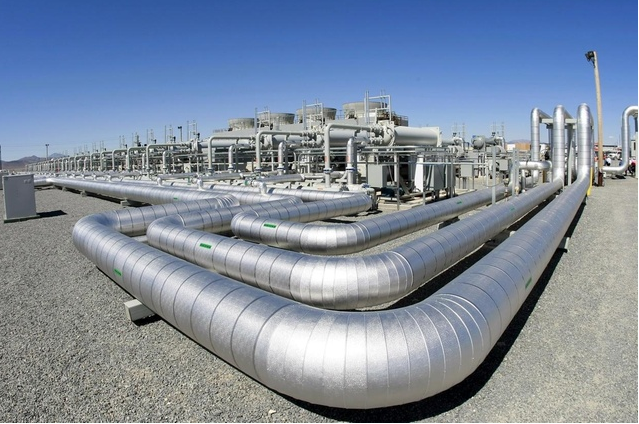Injection of pressurised water underground creates a lot of pressure in the spaces between the rocks and is believed to be responsible for minor tremors. (Keystone / George Frey / Raser Technologies) Identifying the kind of fault or tectonic forces in an underground reservoir can reduce the risk of tremors caused by geothermal energy or carbon storage. The injection of cold pressurised water into hot impermeable rocks several kilometres underground is how underground reservoirs are created for geothermal energy. The super heated water is then pumped up and used to powers turbines in a geothermal plant. However, the process creates a lot of pressure in the spaces between the rocks and this horizontal stress is believed to be responsible for minor tremors. Enhanced
Topics:
Swissinfo considers the following as important: 3.) Swiss Info, 3) Swiss Markets and News, Business, Featured, newsletter
This could be interesting, too:
Nachrichten Ticker - www.finanzen.ch writes Die Performance der Kryptowährungen in KW 9: Das hat sich bei Bitcoin, Ether & Co. getan
Nachrichten Ticker - www.finanzen.ch writes Wer verbirgt sich hinter der Ethereum-Technologie?
Martin Hartmann writes Eine Analyse nach den Lehren von Milton Friedman
Marc Chandler writes March 2025 Monthly

Injection of pressurised water underground creates a lot of pressure in the spaces between the rocks and is believed to be responsible for minor tremors. (Keystone / George Frey / Raser Technologies)
Identifying the kind of fault or tectonic forces in an underground reservoir can reduce the risk of tremors caused by geothermal energy or carbon storage.
The injection of cold pressurised water into hot impermeable rocks several kilometres underground is how underground reservoirs are created for geothermal energy. The super heated water is then pumped up and used to powers turbines in a geothermal plant. However, the process creates a lot of pressure in the spaces between the rocks and this horizontal stress is believed to be responsible for minor tremors.
Enhanced Geothermal Stimulation (EGS), as the technology is known, has faced setbacks in Switzerland after triggering earthquakes in Basel in 2006 and in St. Gallen in 2013. Scientists at the Swiss Federal Institute of Technology in Lausanne (EPFL) believe that faults or tectonic forces have an important role to play in such human-induced tremors.
According to the researchers, different types of faults require different approaches. For reverse faults – where two sections push against each other- they suggest injecting cold fluid underground for at least 12 months to cool the reservoirs and cause the rocks to contract.
“This lowers the horizontal forces acting on it, thereby reducing differential stress and making earthquakes less likely,” says study lead Barnaby Fryer.
For normal faults – where two sections pull away from each other – Enhanced Geothermal Stimulation can actually help stabilise the fault by increasing the horizontal stress. In such faults earthquakes are caused where there is a great difference between horizontal and vertical stresses.
“That’s why it’s so important to understand the properties of a reservoir before you start injecting,” says Fryer.
Their findings have been published in Geophysical Journal Internationalexternal link.
Tags: Business,Featured,newsletter
